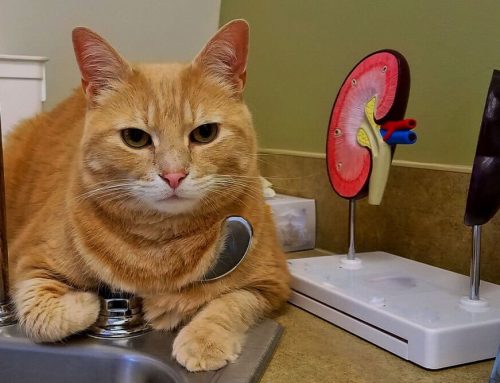Ticks are pretty gross—you can’t deny this simple fact. And while we all hate pulling ticks off our dogs, their negative effects go far beyond the “eww” factor. Ticks can transmit serious diseases to your family and your pets, including Lyme disease. The Northeast is a hot spot for Lyme disease, and MountainView Veterinary Hospital wants you to understand how to protect your pet from the potentially serious or deadly long-term consequences of the disease.
Lyme disease transmission in pets
Lyme disease is caused by bacteria called Borrelia burgdorferi, which ticks may harbor and transmit to people or pets while they are attached for a blood meal. Several tick species can carry the Lyme bacteria, but the major spreader is the deer or black-legged tick. These small ticks prefer deer and other wildlife hosts, but they will happily feed on other warm-blooded creatures when available.
Lyme disease commonly affects humans, horses, and dogs, and while cats can be infected by the bacteria as well, they seem resistant to long-term effects. Infected ticks pick up the Lyme bacteria from other infected animals—often rodents—and can transmit the disease to a new host after attachment for at least 24 hours during blood-meal feeding. The U.S. Centers for Disease Control and Prevention reports around 30,000 new Lyme cases in humans each year, and dogs are at even greater risk because of their active, outdoor lifestyle and close-to-the-ground body.

Lyme disease signs and long-term effects in pets
Lyme infection may or may not result in noticeable signs in dogs. Many are asymptomatic or have vague, transient signs that disappear after a few days. Dogs who get sick classically develop a shifting-leg lameness because of multi-joint inflammation and a mild to moderate fever. Regardless of whether a dog shows signs during the initial infection, untreated Lyme disease can progress to a chronic state that damages the kidneys, nervous system, or heart, and threatens the dog’s life and health.
Lyme disease diagnosis and treatment in pets
Because Lyme disease can be tricky to diagnose, routine annual testing is recommended for all dogs. The Lyme test is usually run in a combination test—either in-house or through an outside laboratory—that screens for several other tick-borne diseases, as well as heartworm infection. In addition to routine screening, we may recommend testing your pet four to six weeks after a known tick bite because the test will not become positive until the body has had a chance to produce detectable antibodies.
If your pet is positive for Lyme exposure on a screening test, we will order additional tests to quantify the antibody level and may begin treatment with long-term antibiotics. After antibiotic therapy, we can repeat the quantitative test to ensure the infection has resolved. Pets who are acutely sick from Lyme disease may require supportive care for a few days, and those with chronic disease consequences, such as kidney damage, will need treatment aimed at improving function and preventing further decline.
Pet tick control strategies
Preventing Lyme disease starts with tick control. Keeping your dog on an effective, monthly, spot-on, or oral flea and tick preventative is the most important step, but not the only one. Other tick-control strategies include:
- Avoiding tick-heavy areas during the spring and fall, when ticks are most active.
- Checking your pet for ticks as soon as you get home from an outdoor activity.
- Removing all attached ticks promptly—ask your veterinarian to show you how.
- Brushing out long-haired pets to remove unseen ticks before coming inside.
- Not crushing ticks because this can release harmful bacteria. Instead, seal them in a container with rubbing alcohol.
Pet Lyme disease vaccination
Aside from tick control, you can take one additional step to protect your dog. An effective Lyme disease vaccine is available for dogs but works best when given before any tick exposure. Ask us about the Lyme disease vaccine if you know your dog will encounter ticks in your yard, on walks, or during other outdoor activities in wooded or high-grass areas. The initial series is completed in two doses, given about a month apart, and then annual boosters are required to maintain protection.
Remember that other tick-borne diseases also can be transmitted to your pet, and the Lyme disease vaccine is not a complete solution. The vaccine is another step you can take to protect your pet but it does not serve as a substitute for adequate tick control measures.
Contact the MountainView Veterinary Hospital team to learn more about Lyme disease and other vector-borne illnesses in the Denville, N.J., areas, or to schedule a wellness visit and consultation to discuss the Lyme vaccine for your dog.









Leave A Comment